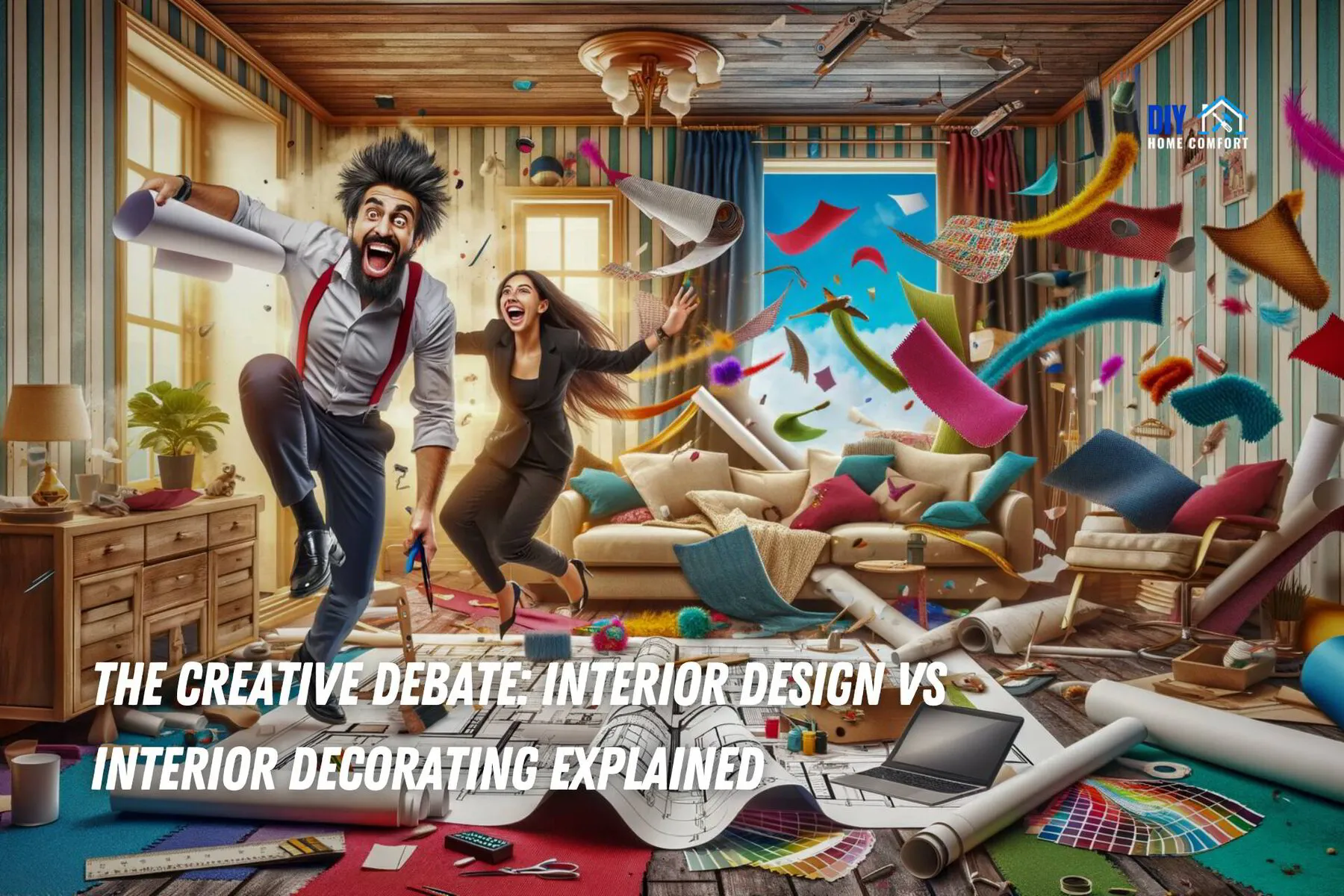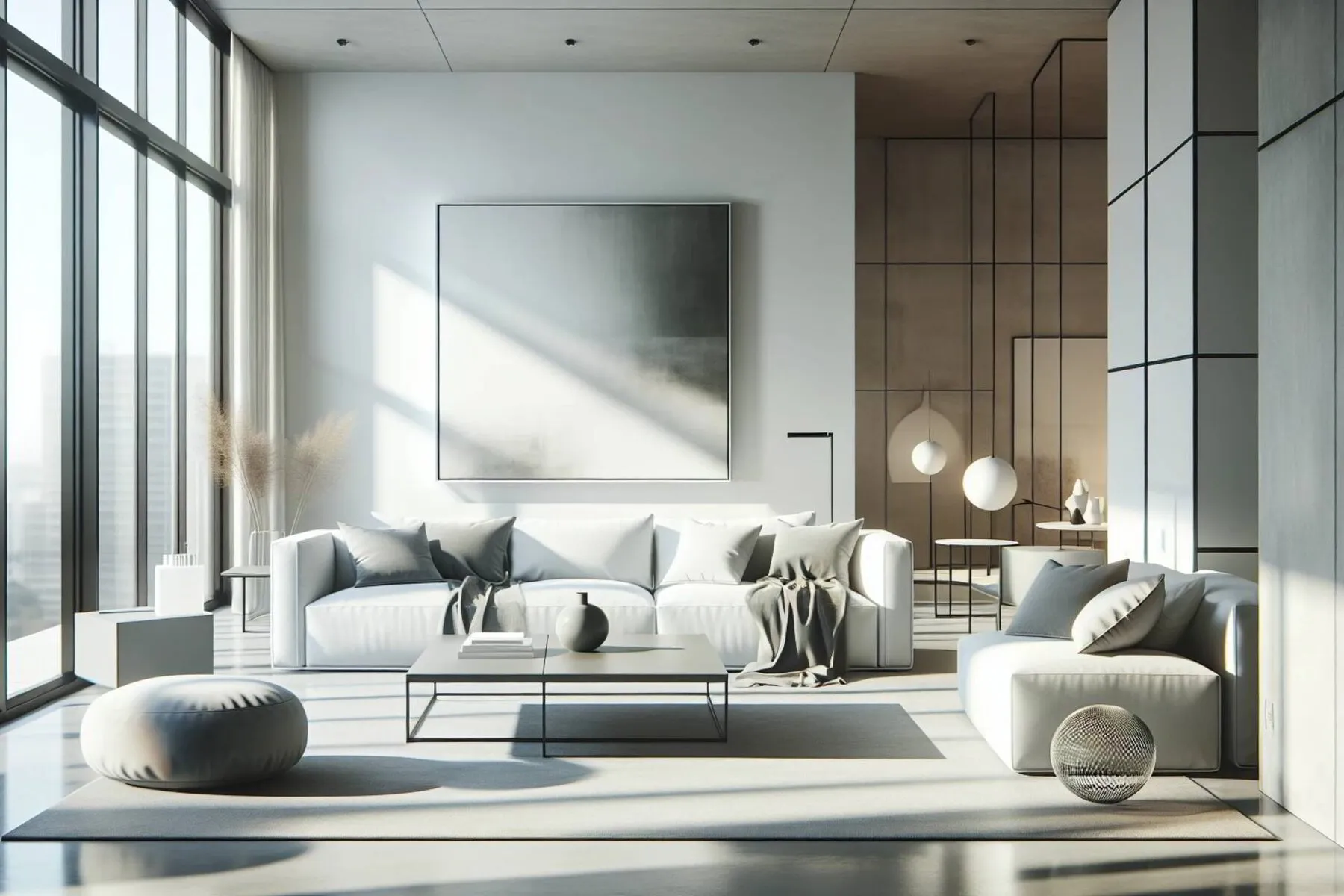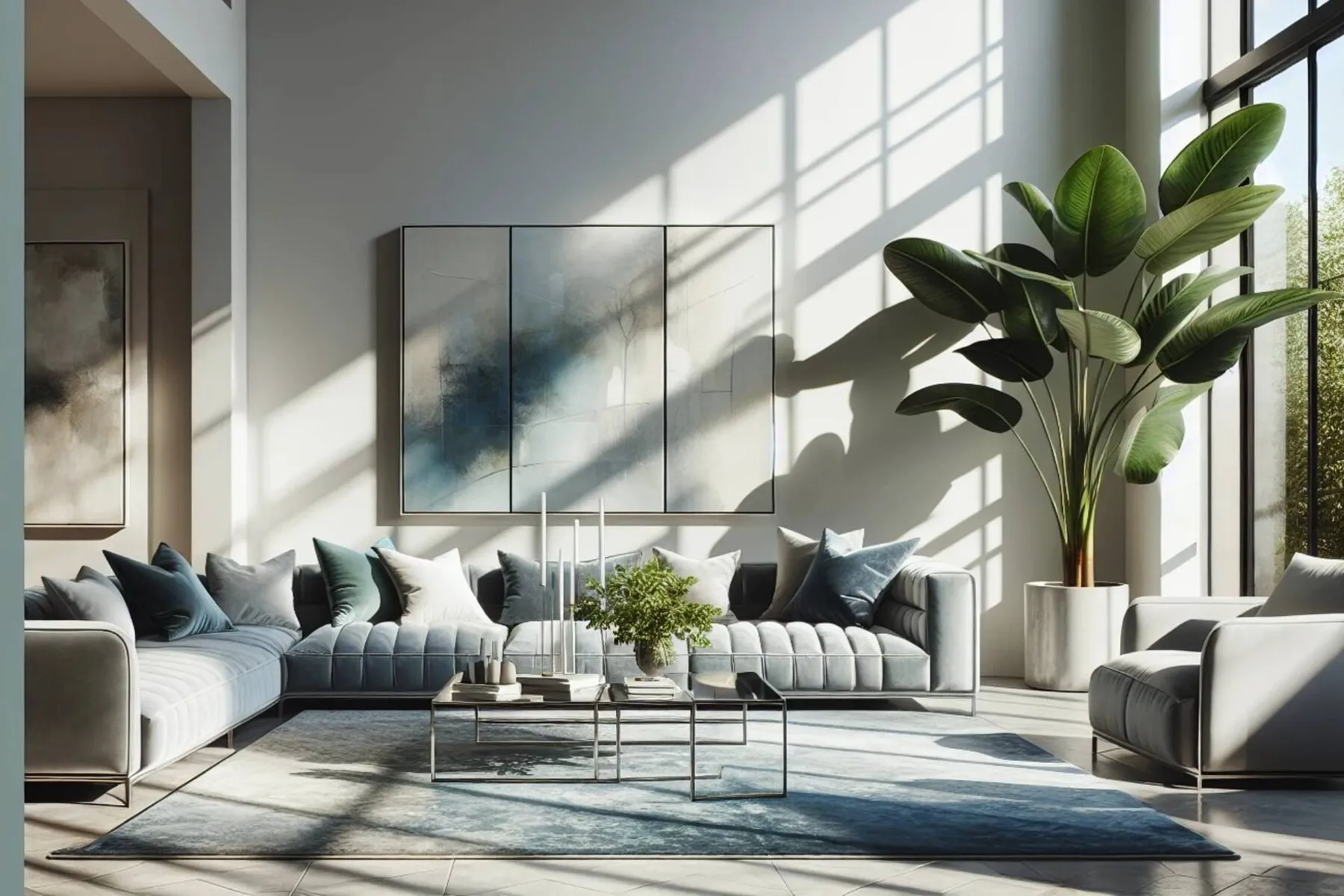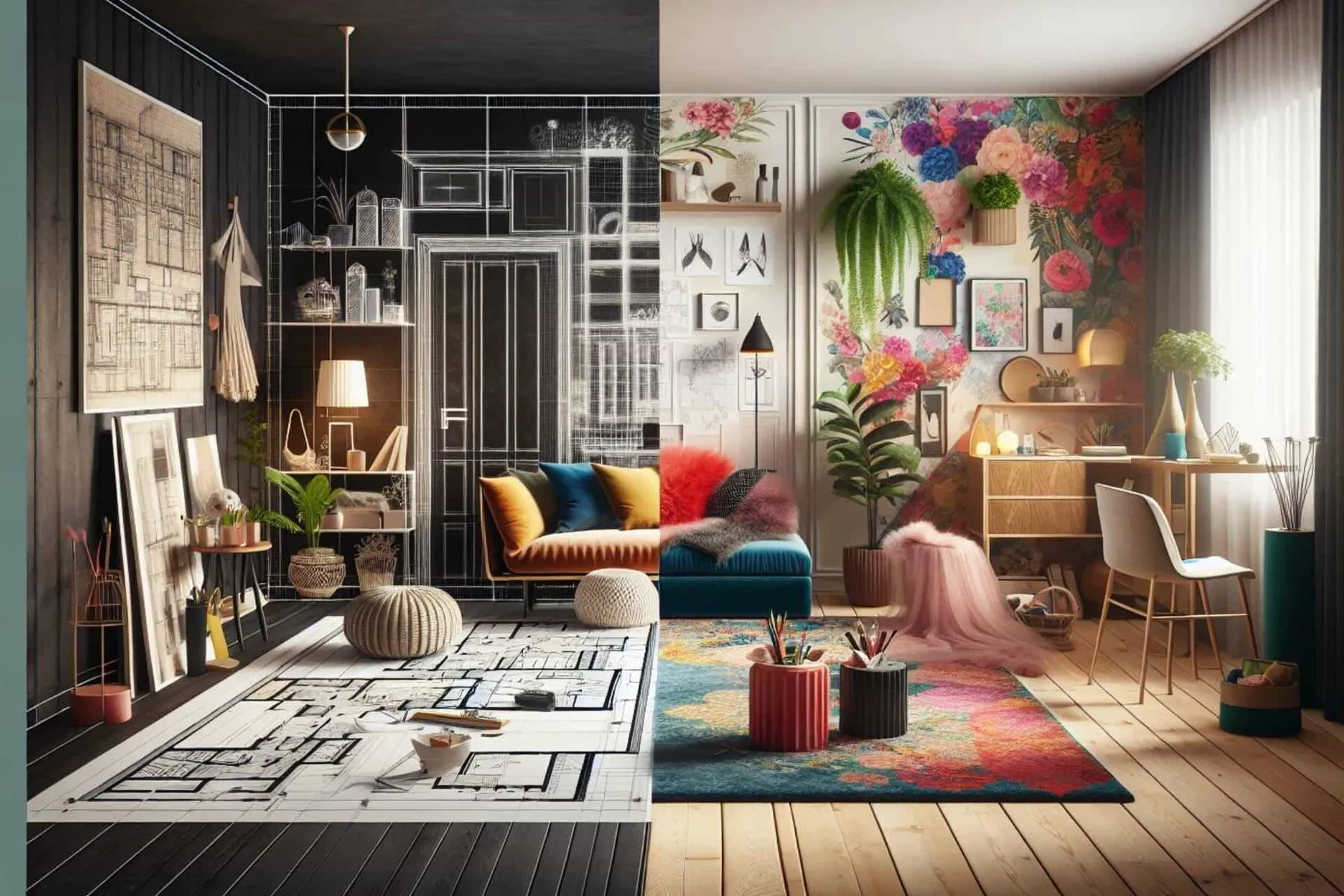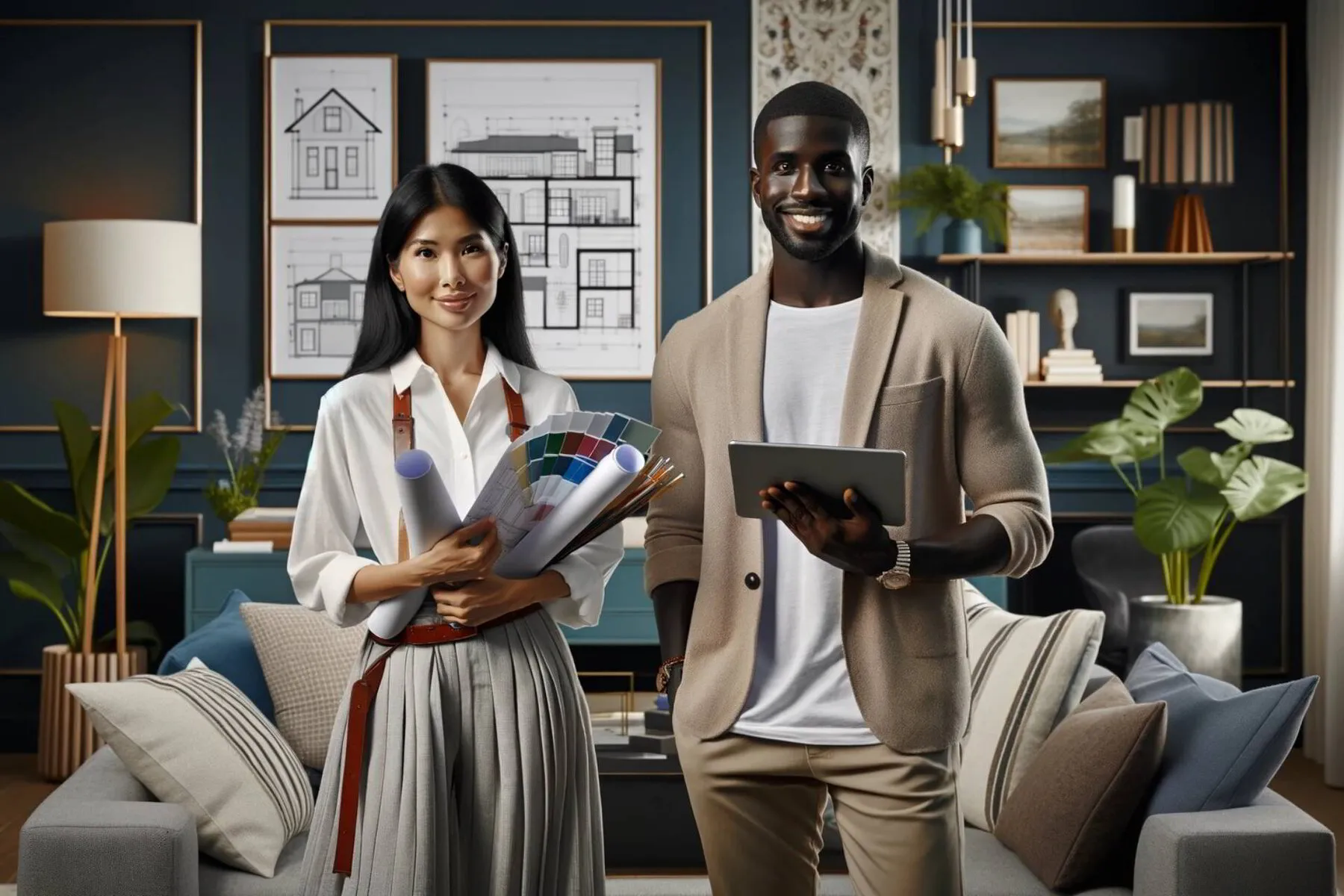Do you ever wonder about the distinction between interior design vs interior decorating? Have you ever wondered which professional you should hire for your next home improvement project? Look no further!
This blog post will guide you through the essential differences between interior designers and decorators, their unique skill sets, and how to choose the right professional for your needs. Let's embark on a journey to clarify your space and make informed decisions for your next project.
📘 Key Takeaways
- Interior Designers and Decorators have different skill sets, qualifications, duties, and responsibilities.
- Assessing project needs is essential for selecting the right professional to ensure they align with your vision & expectations.
- Open communication & comprehensive planning are key strategies for successful investment in interior design or decorating projects.
Understanding Interior Design
At its core, interior design is a multi-faceted profession that involves creative and technical solutions within a structure to achieve a built interior environment.
Interior designers focus on creating functional spaces through technical solutions, while interior decorators emphasize aesthetics and surface-level enhancements.
Hiring an interior designer at the start of a project guarantees functional spaces that are meticulously planned and executed according to your needs and preferences.
Interior designers are well-versed in the art and science of design and take a holistic approach to every project, striving to create environments that balance beauty and function.
Education and Training
Interior designers typically possess formal education and training in fields such as:
- architecture
- CAD
- design
- color
- space planning
This knowledge and expertise enable them to create functional spaces that meet the needs of their clients.
Many aspiring interior designers intern with established professionals before establishing their practice or joining a design firm. The average salary for an interior designer in the United States is $56,206 per annum.
Formal training through a certificate or degree program can provide the necessary knowledge and skills in various software applications used in the industry.
These programs typically require a bachelor's degree and a four-year program, allowing interior designers to gain experience and hone their skills in architecture, space planning, and other industry-specific fields.
📘 Related Reading: How to Become an Interior Designer: A Comprehensive Guide
Credentials and Licensing
The credentials needed for interior designers may vary depending on the state, but they may be required to pass an exam and be registered with a governing council.
The American Society of Interior Designers (ASID) is the oldest and most extensive professional organization for interior designers, suppliers, and manufacturers. Though not mandatory in all locations, many interior designers pursue credentialing and certification to distinguish themselves from decorators.
Some US states and Canadian provinces require licensing or registration for interior designers, which results in a licensed interior designer.
This holds these professionals to high standards, ensuring they have the qualifications and expertise to create functional, safe, and attractive spaces for their clients.
Duties and Responsibilities
Interior designers are responsible for:
- Executing construction, refurbishment, and space planning projects
- Working in collaboration with architects, contractors, and developers
- Possessing strong problem-solving capabilities
- Understanding building codes and regulatory requirements
- Offering interior decorating abilities in addition to design
Their role in a construction project involves collaborating with architects and builders to formulate floor plans electrical, and plumbing plans while establishing project requirements for elements such as floors, millwork, moldings, lighting, and countertops.
Integrating creative and technical solutions, interior designers can transform existing spaces into functional, visually appealing, and comfortable environments.
📘 Related Reading: Exploring the Craft: What Does an Interior Designer Do?
Decoding Interior Decorating
Interior decorating focuses on selecting furnishings, colors, and accessories to complement interior spaces without making structural alterations.
Interior decorating primarily focuses on using design elements such as color palettes, furniture, and accessories to create aesthetically pleasing spaces.
An interior decorator may be suitable for those looking to alter paint colors, install new window treatments, or reupholster furniture.
In the United States, the average salary is between 40-50K per year, with more experienced decorators getting paid more than 80K per year.
As a business owner in the field of interior decorating, you can expect to charge between $100 and $300 for an initial consultation. Following this consultation, your standard hourly rate would generally range from $150 to $200.
Education and Qualifications
No formal training is required for interior decorators; however, a certificate in decorating software or a college qualification in a related field can be beneficial.
Some options for training and certification in interior decorating include:
- The National Council for Interior Design Qualification (NCIDQ)
- The C.I.D. Certification Program
- Various professional certificate programs offered by universities and institutions
These programs provide industry skills and knowledge to enable individuals to pursue a career in interior decorating.
Organizations that offer certification for interior decorators, such as C.I.D., include ASID (American Society of Interior Designers) and IDS (Interior Design Society).
A degree or certification in interior decorating can impart skills such as creativity, technical knowledge, communication abilities, familiarity with design trends, and proficiency in drawing and computer-aided design (CAD).
Credentials and Certifications
Though credentials are not required for interior decorators, obtaining formal certifications can help enhance their skills and credibility.
The Certified Interior Decorators International (C.I.D.) specializes in providing education for interior decorators. This includes several course options and a certification program.
The coursework covers topics such as:
- color and fabric
- room layouts
- space planning
- furniture styles
These courses help decorators to build a solid foundation in their field.
Certifications allow interior decorators to show their dedication to professional development and expertise in their field.
This can be especially beneficial for clients seeking a decorator with a high level of expertise and a strong understanding of current design trends.
Duties and Responsibilities
Interior decorators collaborate with clients to design aesthetically pleasing spaces while engaging with furniture makers, upholsterers, painters, and specialists.
Their role in color selection is to draw on color theory and design principles to select colors that create a harmonious and aesthetically pleasing space, considering factors such as the desired mood and atmosphere, the function of the space, and the client's preferences.
The space planning process in an interior decorator's practice involves refining the design concept, creating sketches and floor plans, and selecting finishes for various elements.
The aim is to enhance utility and efficiency while producing a unified and aesthetically pleasing design that reflects the client's vision and personal style.
Comparing Interior Designers and Decorators
Designers are responsible for crafting practical interiors within a structure, whereas decorators embellish a space with ornamental elements.
Interior designers generally possess a formal education and training in interior design, which includes instruction in design principles, space planning, building codes, and construction materials.
In contrast, interior decorators do not typically require a formal education and primarily concentrate on aesthetics and decorating.
Many U.S. states and Canadian provinces have legal regulations that distinguish between an interior designer and an interior decorator, with these regulations typically necessitating interior designers to be licensed or registered.
In contrast, the criteria for interior decorators are less stringent and not legally defined.
Scope of Work
Interior designers are responsible for space planning, construction management, and finishing, while interior decorators concentrate on aesthetics and surface-level enhancements.
Designers collaborate with architects and builders to plan and execute structural changes for a project, optimizing the space's functionality and aesthetics. They also advise selecting materials and decorative accents to enhance the overall design.
On the other hand, interior designers and interior decorators typically provide suggestions for decorating residential or office spaces, recommending color schemes, and helping clients create a cohesive and aesthetically pleasing environment.
They focus primarily on the visual aspects of a space, working closely with:
- furniture makers
- upholsterers
- painters
- other specialists
to bring their client's vision to life.
Skill Sets and Expertise
Interior designers and decorators possess unique skill sets and expertise in their respective fields.
Designers are trained in technical aspects, including:
- Planning
- Problem-solving
- Knowledge of design principles
- Proficiency in computer-aided design
- Formal education and training
Decorators, however, specialize in style and trends and focus primarily on aesthetics and surface-level enhancements.
Both professions involve aesthetic decoration, but their areas of focus differ significantly. Understanding the distinct skill sets and expertise of interior designers and decorators is crucial in selecting the appropriate professional for your project.
The decision to hire an interior designer or a decorator depends on your specific needs, budget, and the outcome you wish to achieve.
Choosing the Right Professional for Your Project
Selecting the appropriate professional for your project is a significant decision that can heavily influence the success of your design venture.
You can determine whether an interior designer or decorator is best suited for the job by assessing your project needs, budget, and desired outcome.
It is essential to evaluate potential professionals' qualifications, expertise, communication abilities, and standing to ensure they align with your vision and expectations.
Understanding the differences between interior designers and decorators equips you to make a knowledgeable decision in choosing a professional for your project.
Regardless of the professional you select, open communication, realistic expectations, and effective budget management are vital for achieving success in your project.
Assessing Your Project Needs
Evaluate your project requirements, such as structural changes or aesthetic updates, to determine whether an interior designer or decorator best fits your interior design project.
Interior designers manage many projects, including residential, hospitality, commercial, and educational spaces.
They collaborate with clients to comprehend their requirements and preferences, generate practical and visually appealing designs, select furniture and materials, and monitor the execution of the design plan.
On the other hand, interior decorators provide suggestions for decorating residential or office spaces, recommend color schemes, and help clients create a cohesive and aesthetically pleasing environment.
If your project involves significant changes to the layout, foundation, or load-bearing elements of the space, structural changes may be necessary, in which case an interior designer would be more appropriate.
Alternatively, if the objective is to improve the appearance and style of the space without altering its fundamental structure, then an interior decorator would be more suitable.
Evaluating Portfolios and References
Evaluating potential interior designers' or decorators' portfolios and references is crucial to ensure they align with your vision and expectations.
To assess an interior designer's portfolio, consider the variety of styles, attention to detail, quality of work, functionality, and client satisfaction.
Similarly, when evaluating an interior decorator's portfolio, consider the variety of projects, attention to detail, cohesiveness, functionality, and client satisfaction.
Beyond reviewing portfolios, requesting and verifying references in the interior design industry is also essential.
Contacting past clients and inquiring about their experiences can provide valuable insight into the designer or decorator's ability to comprehend and meet client expectations. Positive reviews and satisfied customers indicate the professional's expertise and reliability.
Maximizing Your Investment
Establish clear communication and budgeting strategies with your chosen professional to maximize your investment in an interior design or decorating project.
Maintaining open communication with your designer or decorator ensures that your vision is understood and executed effectively while setting a realistic budget and timeline, which helps manage expectations and avoid potential setbacks.
By taking these steps, you can ensure your project runs smoothly and is completed satisfactorily. The success of a project, whether with an interior designer or decorator, hinges on effective communication, comprehensive planning, and careful resource management.
Establishing Clear Communication
Clear communication between clients and interior design professionals is vital for a successful outcome.
By articulating your expectations and understanding the professional's vision, you can develop a comprehensive plan that meets the needs of both parties and guarantees everyone is satisfied with the proposed design.
Involving the client in the project assists them in comprehending the project's progression and making informed decisions.
When collaborating with an interior designer or decorator, it is important to:
- Communicate your preferences
- Ask questions
- Seek clarification when necessary
- Listen attentively
This open and honest dialogue will help establish trust and ensure that your project is completed satisfactorily.
Budgeting and Time Management
Establishing a realistic budget and timeline for your project is necessary to manage expectations and prevent potential setbacks.
When developing a comprehensive budget for an interior design or decorating project, factors such as the cost of materials, labor, and additional services should be considered.
By prioritizing spending according to the goals and priorities of the project, you can allocate resources effectively and ensure a successful outcome.
Utilizing project management tools or interior design software, creating to-do lists, prioritizing tasks, and setting realistic deadlines are effective strategies for time management and keeping your project on track.
You can maintain motivation and achieve a successful project outcome by tracking progress and celebrating milestones.
Summary
Understanding the differences between interior designers and decorators is essential in selecting the right professional for your project.
Interior designers focus on creating functional spaces through technical solutions, while interior decorators emphasize aesthetics and surface-level enhancements.
Both professions have unique skill sets and expertise, with designers trained in technical aspects and decorators specializing in style and trends.
By assessing your project needs, evaluating portfolios and references, establishing clear communication, and managing your budget effectively, you can make an informed decision and maximize your investment in a successful interior design or decorating project.
The choice is yours; take the first step toward transforming your space today!
📘 Related Reading: The 7 Elements of Interior Design
Lara Harding
Lara is a supporting author @ DIY Home Comfort. She's an experienced interior designer and decorator and a full-time mom. You can find out more about her here.
Frequently Asked Questions
Can you be both an interior designer and decorator?
Yes, it is possible to be both an interior designer and a decorator. However, an interior designer needs the proper credentials to offer interior design services.
What does an interior decorator do?
An interior decorator is like a personal stylist who helps create an atmosphere within a space to align with their client's unique style. They use paint, fabric, furniture, and accessories to change the visual aesthetic of the area while considering the budget set by their client.
What is the difference between interior design and interior styling?
Interior Design is the art and science of understanding people's behavior to create functional spaces within a building. At the same time, Interior Decoration is furnishing or adoring a space with fashionable or beautiful things. Interior Designers may style spaces, but Styling focuses mainly on aesthetics and creating visually appealing spaces, while Design involves aesthetics and functionality.
Do interior designers require formal education and training?
Interior designers typically require formal education and training in architecture, CAD, design, color, and space planning.
What types of projects are suitable for interior decorators?
Interior decorators are ideal for projects such as changing paint colors, installing new window treatments, and reupholstering furniture.
